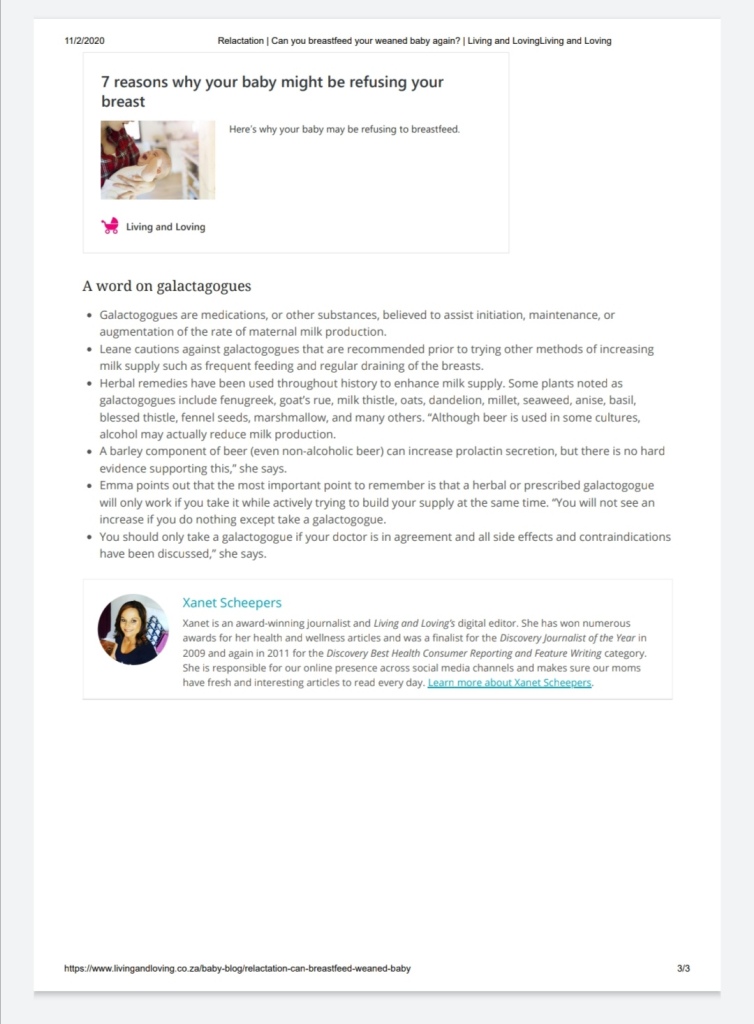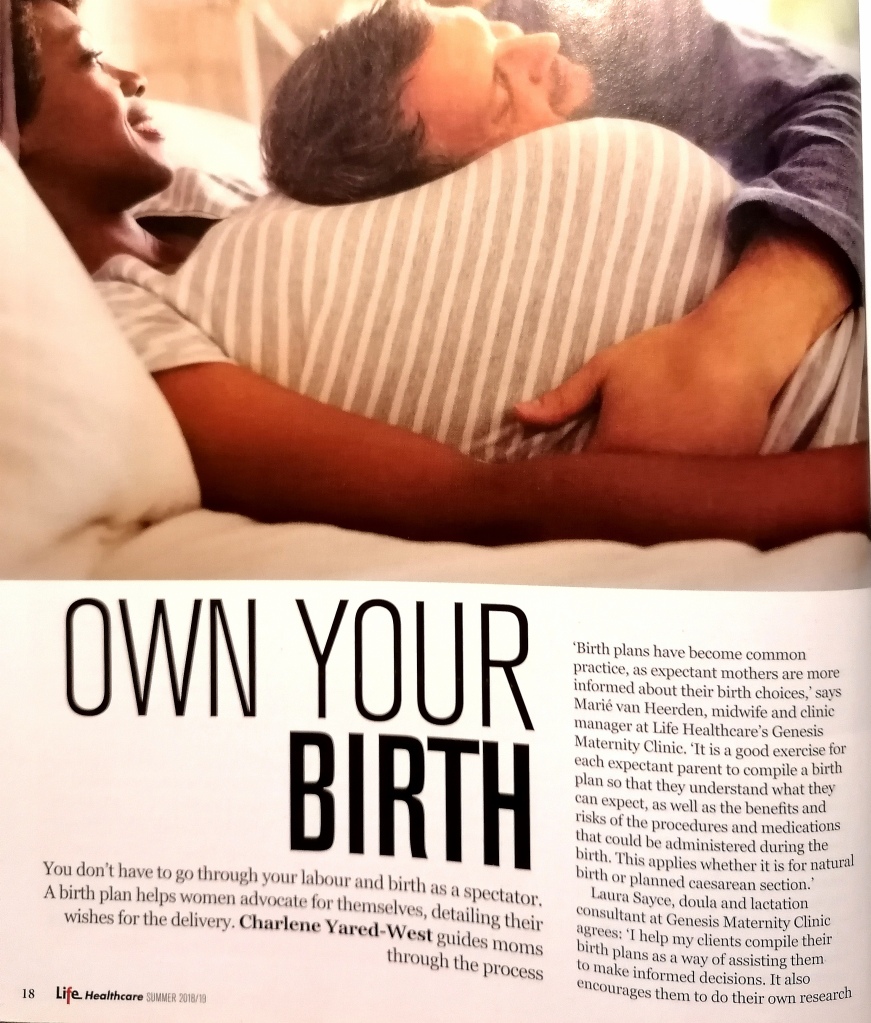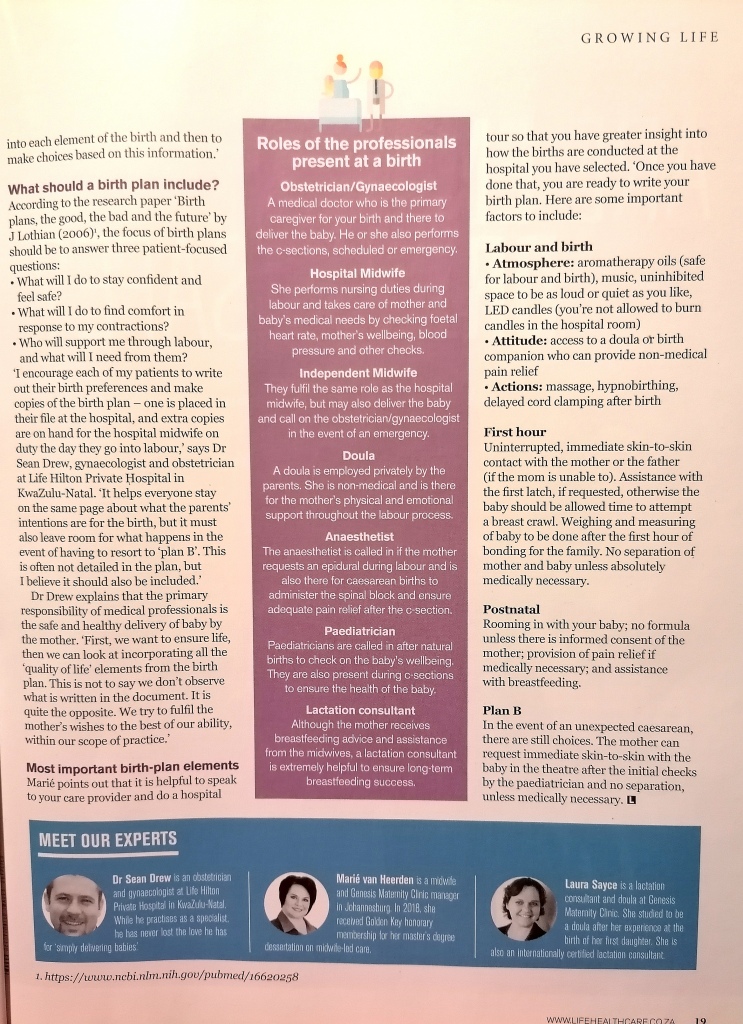
Just how easy is it to stimulate milk supply after stopping or induce lactation as an adoptive mother? Charlene Yared West explores the topic of relactation and induced lactation to find out more.
Firstly, what is relactation?
According to Leana Habeck, La Leche League Leader (llli.org/southafrica), there is a difference between relactation and induced lactation. “Relactation is about re-establishing of milk secretion after weaning baby from the breast,” says Leana. “Adoptive breastfeeding, also called induced lactation in a woman who was not pregnant with the current baby, may involve hormonal preparation (oestrogen and/or progesterone – simulating a pregnancy) followed by sudden cessation of the hormones (simulating a birth) and then the commencement of pumping or suckling and a galactagogue that increases prolactin secretion.” Internationally Board Certified Lactation Consultant, childbirth educator and midwife Emma Numanoglu explains the protocols for inducing lactation, developed by Dr. Jack Newman and Lenore Goldbarb, as involving a regime of taking the contraceptive pill together with domperidone. “A few weeks before the expected arrival of the baby the mother stops taking the pill, continues with domperidone and starts expressing milk (this mimics the process of pregnancy and lactogenesis after birth). This method has been used successfully and safely for three decades by many women who induced lactation,” she says. “A mother who is planning to apply one of the protocols will need to find a doctor who is supportive of breastfeeding, can explain risks and benefits of taking the medication, and is willing to take responsibility for prescribing domperidone in doses that exceed guidelines for licensed use.”

Commitment to breastfeeding is key to success
Relactation, explains Emma, is also an option for those mothers who have have decided to bottlefeed and have then changed their minds and wish to go back to breastfeeding, or even for those mothers whose babies are not tolerating formula well. “In my practise, this is the most common reason for relactation and the reasons are important as it requires quite a commitment from the mother. For example, if the baby is intolerant to the breast milk substitutes being given, the mother may be more committed to resuming breastfeeding,” she says. “It is important not to place emphasis only on her milk as evidence of success, as this can cause anxiety and thereby inhibit her milk production and ejection reflex. For these reasons it is important to discuss with the mother the benefits, the concerns and problematic elements of relactation.” Emma sees the most success in relactation with babies under three months, but older than that is not impossible, it may just take more effort. “Induced or adoptive lactation is becoming more popular. Mostly adopting couples and lesbian couples seek assistance in breastfeeding their adoptive baby.”
The aim is bonding and creating a milk supply
“For both adoptive breastfeeding and relactation, the aim is to bring about (or back) a milk supply and bring the baby back to the breast. These two are interconnected endeavours, as the best thing for a milk supply is to have a baby breastfeeding frequently and a baby is more likely to breastfeed or return to the breast if there is plenty of milk there,” says Leana. “The difference between the two is such that with a natural pregnancy the milk making tissues are built, whereas with adoptive breastfeeding (if a mother has never been pregnant) she may need hormonal preparation. For many adoptive mothers it may be more about connecting deeply with the new baby through breastfeeding, than producing large volumes of breastmilk.” Emma adds that relactation can fail if mothers are not given the correct support and professional advice preferably from an IBCLC or SACLC trained consultant and La Leche League leader. “Success also depends on quite a few other factors, such as the determination of the mother, no underlying medical conditions and the baby’s age.”
How the breasts work
Leana describes the anatomy of the breast as 10 to 20 branches (milk ducts), heavy with clusters of grapes all intimately bound together by interweaving vines and vegetation. Each single grape an alveoli or milk sack where milk is made and each alveoli is surrounded by a basket of muscle cells that squeezes the milk out into the ducts when it contracts. The 10 to 20 branches are all rooted in the nipple, though each nipple has only between four to nine openings through which the milk is excreted. “Baby’s suckling acts as a stimulus to mom’s body – sending a message to the brain to release the milk producing hormones, prolactin and oxytocin into bloodstream,” she says. “Prolactin, released with the Milk Ejection Reflex (MER), acts on the alveoli to produce milk and Oxytocin, released with the MER, acts on the muscle cells around the alveoli causing them to contract and squeeze out the milk towards the nipple.” It is important to note that large amounts of milk are not stored in the ducts before the MER and that the rapid sucking action of the baby stimulates the let down of milk. The most important thing is to ensure a good latch to help the MER during breastfeeding as well as a good breast pump to stimulate the production of milk too.

Methods of relactation
Emma recommends holding your baby skin to skin as often as you can, in a calm relaxed environment such as lying in your bed, in a comfy chair or even carrying them around in a sling at home. Directly feeding your baby from the breast is the most effective way to increase your supply or relactate. Offer your breast to your baby frequently when they are happy! Do not try breastfeeding when your baby is upset or irritated as it will be nearly impossible to latch them on. “This is an extremely important step. Although it sounds so simple, often this is how babies get interested in breastfeeding again.You can start pumping if you find your baby does not want to breastfeed for very long, or is not interested in taking the breast. Since you are trying to build your supply back up or induce lactation again, it is important to pump frequently,” she says. “If you can pump every two to three hours, that would be ideal. At night you can go for longer between pumping but try to get at least one pumping session in per night. When you start pumping you might not get any milk at all or just small amounts, just keep on going! Some women find it takes a couple of months to really get their supply going again, especially if their babies are not breastfeeding or are only occasionally breastfeeding.” She adds that women who have had an extended period of time since breastfeeding might find they do not build up enough of a supply to exclusively breastfeed, but most women will at least be able to partially breastfeed their babies and many women will eventually be able to exclusively breastfeed their babies.
What is a supplemental nursing system?
A nursing supplementer is a device that allows a baby to receive extra milk at the breast rather than by bottle and teat. It consists of a container that is worn on a cord around the mother’s neck. Fine tubing carries expressed breastmilk or artificial baby milk from the container to the nipple. When the baby sucks at the breast, milk is drawn through the tubing into his mouth, along with any milk from the breast. “Most mothers who have problems getting breastfeeding started will solve them without using a breastfeeding supplementer. Often all some mothers need is information and support. Talking the problem over with someone who understands and supports your wish to breastfeed and who knows a lot about breastfeeding can help you work through any problems. Often they will be able to suggest new ideas to try,” says Emma. “Sometimes, you can solve your own problems by learning more about how breastfeeding works. It is important that the baby is able to suck well at the breast, even if he tires easily, in order for the breastfeeding supplementer to work. A baby with a poor or abnormal suck may not be able to get the milk through the tubing any better than from the breast itself.”
| I breastfed my adopted babyDanielle Bischoff is a photographer and storyteller and lives and works in Cape Town with her husband comedian, Rob van Vuuren and their six-year-old adopted daughter, Bijou. “Rob and I both have adoption in our families and when falling pregnant became increasingly difficult and a cause of huge distress for us, the doctors said the only option was to go the IVF route. We both felt like we needed to take a breather from the whole thing and put the baby plans aside for a few months. We didn’t want to rush into a whole IVF mission. We felt that we had been through enough of a wringer just trying to figure out what the problem was. So we left it for a while. After a couple of months we both felt that adoption was the best way forward. I can’t describe it in any other way than I just new our baby was coming to us through adoption. I felt a deep connection and I had even chosen her name before our first meeting with our social workers. There was just this indescribable knowing that baby was on the way and I had to get ready. I didn’t even know that inducing lactation was a thing, but I was so determined to make it happen. So you can imagine the relief I had when contacting Internationally Board Certified Lactation Consultant Jean Riddler, who immediately promised she could help me. It was important to me for two reasons, because I didn’t get to experience a pregnancy I felt like I didn’t want to miss out on the experience of breastfeeding. I had also done some reading on all the amazing benefits. Strengthening the bond was a huge reason and because Bijou was adopted I felt like I had some catching up to do as I hadn’t carried her.I started on the birth control pill to mimic a pregnancy. I wasn’t really happy about going on the pill but as I mentioned before I was pretty determined about it. Once we got the news that a birth mother had chosen us and we had Bijou’s due date, we sped up the process by taking the vomidom (domperidone) and using a double breast pump to stimulate the breasts. This was honestly the hardest part of the whole business. There were moments while sitting there with pumps on my breasts with nothing happening where I really questioned my sanity. Anyway just over a week later the milk started coming out! I was totally amazed and in awe of the human body. I wasn’t able to produce enough milk to purely breastfeed which I was initially quite sad about, but after sometime I was just grateful for the opportunity. I soon realized that being able share the feeding duties with my husband was beneficial for all of us. So in the end we mainly bottle fed her and did top ups with breast milk. I breastfed Bijou until she was about two-years-old. It was a bit of a roller coaster ride to be honest. I felt emotions that I didn’t know I would have. The feelings of inadequacy I felt when I realized that I wasn’t able to purely breastfeed did overwhelm me. I felt like I had let her down and how could I be a mother if I couldn’t feed her. Obviously in retrospect I realize how irrational all that thinking was. Luckily my husband was there to help me through all that. It was totally worth every second on my mothering journey with my precious daughter.” |
| <Sidebar> PATIENCE AND PERSEVERANCE!Many women who keep persevering and gently encourage their babies to breastfeed while doing heaps of skin to skin with their babies do get results, says Emma. “Don’t give up. It just takes a lot of patience, perseverance and time. It will not happen overnight. Support helps too and is very important. Ask for help with cleaning, laundry, cooking and other household chores, while you focus on just being with your baby. Rest and just “hang out” with your baby.” |
| <Sidebar>Amazing motherhood hormonesAt every stage of motherhood there are hormones present to facilitate the changes taking place. In addition to a very long list of natural ingredients, breastmilk also contains the following amazing hormones: Prolactin is the hormone of milk production. The suckling newborn increases prolactin levels which physically works in creating more milk, and emotionally, prolactin encourages the mothering instinct of nurturing and selfless devotion to the baby’s health and well being. Oxytocin is known as a shy hormone and is present in orgasm, labour, birth and breastfeeding and causes the Milk Ejection Reflex (MER). Emotionally it is a bonding hormone, also known as the love hormone because it occurs at intimate, private moments of family bonding and love. Physically it is a contracting hormone and as such contracts the uterus in orgasm, facilitates contractions in labour and birth and allows for the milk let down as the milk ducts are contracted and squeezed to allow for milk to flow. Endorphins are the body’s own natural painkiller and can create euphoria and are released during sex and breastfeeding. |
| <Sidebar> A word on galactagoguesGalactogogues are medications or other substances believed to assist initiation, maintenance, or augmentation of the rate of maternal milk production. Human milk production is a complex physiologic process involving physical and emotional factors and the interaction of multiple hormones, the most important of which is believed to be prolactin, explains Leana. “One should caution against inappropriately recommended galactogogues prior to emphasizing the primary means of increasing the overall rate of milk synthesis, such as frequent feeding and regular draining of the breasts.”A galactagogue may be helpful to speed up the process but are not magic bullets, she adds. They provide building blocks for milk production but effective removal of milk is essential since milk supply seem to be calibrated based on how well the breasts are drained. “If baby is not breastfeeding (well) yet, it is advisable to double pump with a good quality electric pump using the hands-on method.” According to Leana, the currently available pharmaceutical galactogogues are all dopamine antagonists and will increase prolactin levels. Herbal remedies have been used throughout history to enhance milk supply. Some herbs mentioned as galactogogues include fenugreek, goat’s rue, milk thistle (Silybum marianum), oats, dandelion, millet, seaweed, anise, basil, blessed thistle, fennel seeds, marshmallow, and many others. “Although beer is used in some cultures, alcohol may actually reduce milk production. A barley component of beer (even non-alcoholic beer) can increase prolactin secretion, but there is no hard evidence supporting this,” she says. “Mothers wanting to make use of a galactogogues should contact their doctor for a prescription since La Leche League Leaders or International Board Certified Lactation Consultants are not allowed to prescribe any medication be it natural or pharmacological.” Emma points out the most important thing to remember is that an herbal or prescribed galactogogue will only work if you take it while actively trying to build your supply at the same time. “You will not see an increase if you do nothing but take a galactogogue.You should only take a galactogogue if your doctor is in agreement and all side effects and contraindications have been discussed,” she says. |

















